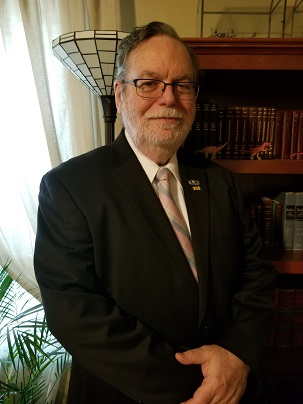
Stephen
Terry, Director


The
Flood
Commentary
for the April 23, 2022, Sabbath School Lesson
 "Every living thing that
moved on land perished--birds, livestock, wild animals, all the creatures that
swarm over the earth, and all mankind. Everything on dry land that had the
breath of life in its nostrils died. Every living thing on the face of the
earth was wiped out; people and animals and the creatures that move along the ground
and the birds were wiped from the earth. Only Noah was left, and those with him
in the ark." Genesis 7:21-23, NIV
"Every living thing that
moved on land perished--birds, livestock, wild animals, all the creatures that
swarm over the earth, and all mankind. Everything on dry land that had the
breath of life in its nostrils died. Every living thing on the face of the
earth was wiped out; people and animals and the creatures that move along the ground
and the birds were wiped from the earth. Only Noah was left, and those with him
in the ark." Genesis 7:21-23, NIV
The flood brings us to a
conundrum when examining the stories of Genesis. It tells us that only eight
individuals survived a global catastrophe but also tries to explain what happened
prior through that very narrow lens. It is like a child playing with a
cardboard tube as though it were a telescope and pointing it at something to
view. While what is seen through the tube may be clear, it represents little of
the actual world around the child and attempting to reconstruct a wholistic view
of the world from that limited perspective will be an effort fraught with
assumptions and errors. Nonetheless, this is all that Genesis offers us. Though
necessarily vague, clues abound that are frustratingly tantalizing while
offering little that is concrete. Some, acknowledging that the antediluvian
world was saturated with a miasma of evil, feel it is better that all of that remains lost on the other side of that narrow
opening, while others, hoping for clues to explain why we are what we are
today, would try to pry that opening further ajar to better understand those
enigmatic clues.
Last week, I mentioned
apocryphal works, "The Book of Enoch" and "The Book of the Giants" that
mentioned intercourse between fallen angels and humankind that produced
demigods, and miscegenation between those fallen angels and beasts that produced
the monsters of old. We can add "The Book of Jubilees," discovered at Qumran, as
another source for this kind of information. The fact that these books were seen
to be credible by ancient worshippers, coupled with similar legends in other cultures'
myths, argues strongly for a still earlier source for these ideas. But lest we
are tempted to relegate all of this to the ignorance of primitives, as
Seventh-day Adventists, we are faced with Ellen White's statement about one of
the contributing factors to the evil that permeated society prior to the flood.
She wrote, "But if there was one sin above another which called for the
destruction of the race by the flood, it was the base crime of amalgamation of
man and beast, which defaced the image of God, and caused confusion everywhere."[i]
What she wrote here is vague and has been highly controversial, especially in
the United States. For it was written in the historical context of the
enslavement of Black people and their emancipation. Some have felt that the various
skin colors and ethnic features were vestiges of antediluvian evil that somehow
were carried forward despite the narrow corridor of the Ark. Those who sought
justification for racial superiority clung to passages like these as proof of
such nonsense. These kinds of arguments also claim that the mark God placed on
Cain after he killed his brother was racial with a curse attached. This is
despite the mark, whatever it might have been, was not a curse but an act of
grace to lessen the impact of Cain's curse.
The Flood story is schizophrenic
as we are given two slightly different accounts. We are first told that Noah is
to bring two of every kind of animal, male and female, onto the Ark to preserve
the various species from the flood, but later, we are told he was to bring two
of each unclean animal and seven of each clean animal. It is as though an
ancient editor, confronted with the earlier account started asking questions. "If
there are only two of each species, how will we continue sacrifices without causing
the extinction of species?" They may have also asked once the flood had abated,
"What will people eat since the vegetation was destroyed?" Increasing the
number of some species from two to seven answered both questions. If the
distinction was based on the lists of the clean and unclean in Leviticus,
chapter 11, we can assume a religious and dietary need for this change in the number
of animals brought into the Ark.
Cultural myths are often infused
with magical thinking that does not take such needs into account, so it remains
for later writers to bring practicality to the narrative. Sometimes this works
and sometimes it does not and provides the foundation for lifelong careers for
apologists who take it upon themselves to attempt to reconcile everything
through facile, if not imaginative, accounts that it all works if we do not
look behind the curtain. They base these constructs on the idea that faith
itself will fail if everything cannot be explained. But then if everything can
be explained, is it really faith? And what happens if we accept the apologists'
explanation and resting comfortably in our trust of that construct, we find a
flaw and the entire structure collapses? How do we respond? Do we find another person
who has a believable explanation? Or do we, as so many, give up in frustration
and abandon faith entirely? This is a dilemma for those who hold Genesis to be
literally true. Truth, by definition, does not contradict itself. Therefore, an
explanation MUST be possible. But this thinking also brings contradiction. How
can a text that claims to be divinely inspired by an ineffable being ever be
completely understood by flawed humanity? And to add to the complexity of the
issue, how can flawed humanity ever record such divinely inspired ideas without
creating errors in the first place? These are familiar problems to those
trained in the examination of ancient texts.
I was privileged to study
textual criticism under the gifted theologian, Sakae Kubo, Dean of Theology at
Walla Walla College, and author of "A Reader's Greek-English Lexicon of the New
Testament." One of the most important lessons I learned there was not to
idolize the text but instead to go beyond the text and any flaws it might contain
to seek out the ineffable God behind it all. In the words of Fox Mulder of "The
X Files," "The truth is out there!" We can vainly wait for it to be served to
us on a silver platter, or we can go and search for it. God and truth both must
be sought after. As the prophet Jeremiah wrote, "You will seek me and find me
when you seek me with all your heart." (Jeremiah 29:13) It they coexist, as I
have come to believe, then truth anywhere, in any discipline, should reveal something
about God.
Despite what some would have us believe;
truth is not limited to the Bible. But with the Bible, once we can see past literalness
to the metaphors, a whole new understanding opens, able to see past the
contradictions. For instance, without explicit details about angel, human, and
animal anatomy, we can understand that conditions prior to the flood story were
an existential threat to all. Every time we consign someone to prison for life
without parole, we show we understand how this can be and the level of evil
that necessitates such drastic responses to keep others safe. Every time we
read that vague account of the antediluvian world, we cannot help but look around
and ask ourselves how does our present situation compare? Every life that is
taken, every human being who is trafficked and enslaved tells us that it is possible
for evil to become that pervasive again. The life that has not been touched by
it is exceedingly rare.
The flood story tells us that it
is possible for evil to culminate in global destruction. It is that aspect of
the story that is so compelling, not the animals or the Ark, but the capability
for evil to bring about the annihilation of everything we love and care about.
But with the flood metaphor, God tells us that those who are willing to change,
to pass through the water of baptism to a new life will be delivered. Sadly,
the flood account also reveals how few really wanted that possibility. The
numbers may be small today as well. The Noahic world was suddenly destroyed.
Everyone was going about their normal lives until they were all swept away,
unable or unwilling to respond to the predicted threat. Are we much different
today? The Earth is overcome with abuse and pollution. Every one of us carries
in our bodies micro plastics and PFAS chemicals that are with us for life,
doing untold damage to our biological systems. Society tells us that we are all
only winners or losers. Winners take all and the losers have nothing but
suffering. If a more powerful country wants what another country has, they
simply take it, acting out on a national level what is happening increasingly
often on our streets. While that ancient world was wiped out by water, with the
United States and Russia having over twelve thousand nuclear missiles between them,
the possibility of an equally devastating global annihilation by fire seems
more reality than metaphor.
The power of the Flood is that
it challenges us to respond to overwhelming evil. Rather than simply allowing
the tide to carry us along to be lost in the maelstrom swallowing everyone else,
we are encouraged to find our foundation in that ineffable God, even if we find
it challenging to understand what comes to us when we do. What seems crazy
today may well be the eventual vehicle of hope and deliverance in the face of unforeseen
catastrophe.